Is an additive needed when making grass silage?
28 March 2024
Ken Stroud of Volac explains the science behind what a proven additive provides.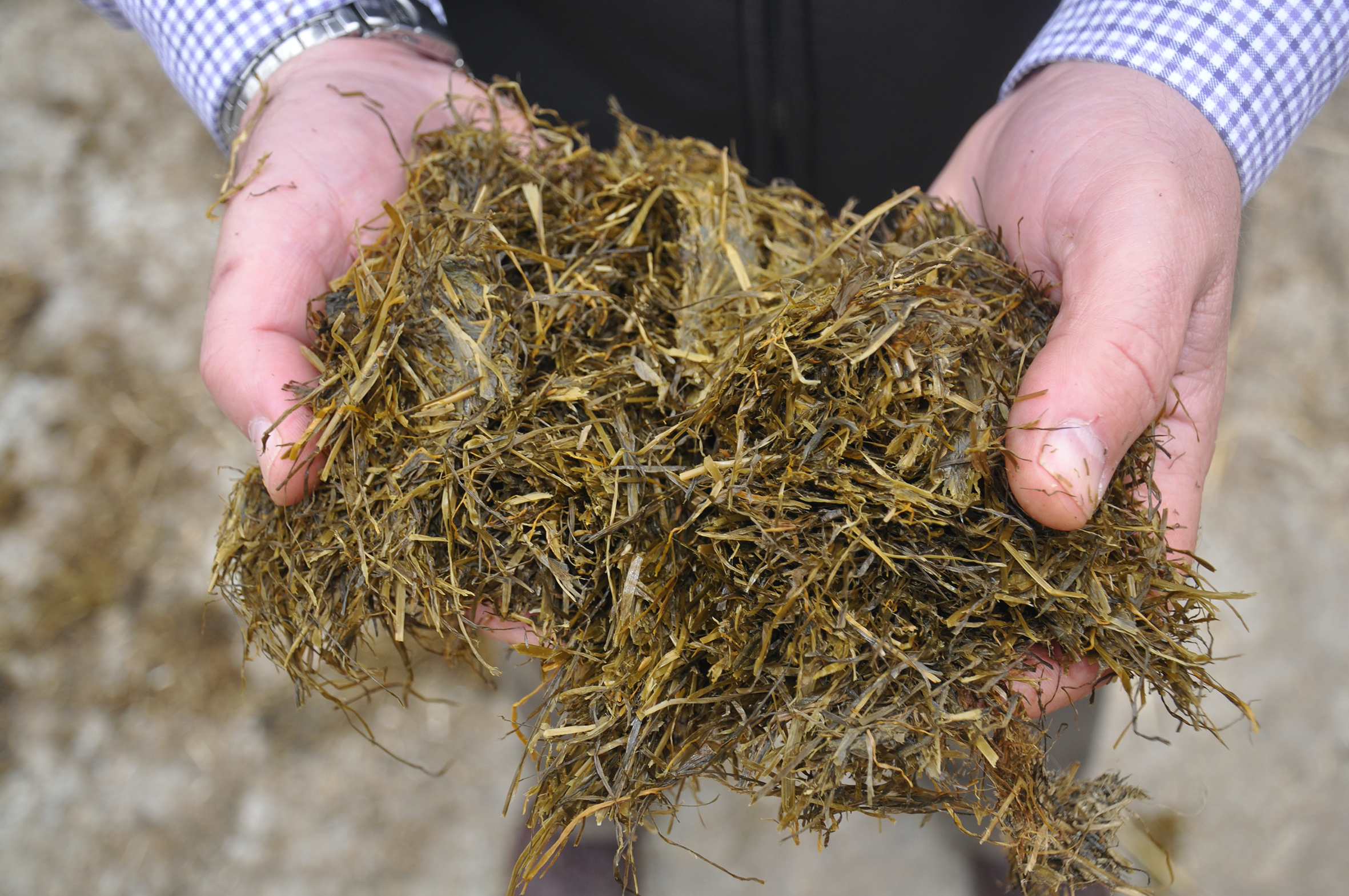
With the silage in a clamp worth a lot of money, it is well worth protecting it against losses in quality and dry matter (DM).
Even in a very well-made silage, typical DM losses can be between 8 and 10%. But if attention to detail slips, losses could easily be over 30%.
Whenever grass is ensiled, some sort of fermentation of the sugar that it contains will occur. Fermentation is basically a kind of ‘pickling’ process. The problem is, while some fermentations are efficient, others are much poorer – leading to much more of the silage’s DM and nutrient content being lost.
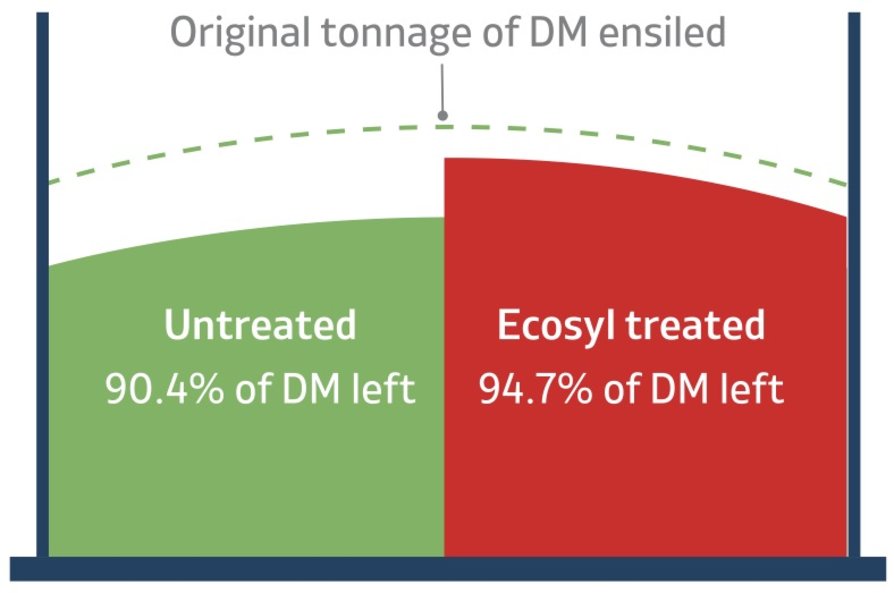
Improving the fermentation
Producing a better fermentation can be influenced in several ways – for example, by maximising the sugar content of the grass by cutting it at the optimum growth stage and wilting rapidly; by minimising contamination with soil and slurry bacteria; and by ensuring the clamp is well consolidated and airtight. All are important.
However, another integral step is to use a proven additive that ‘bombards’ the clamp with a high number of efficient bacteria which rapidly produce lactic acid. Lactic acid is important because it is this that ‘pickles’ the grass to preserve it. The additive Ecosyl, for example, delivers 1 million, highly efficient lactic acid-producing bacteria (Lactobacillus plantarum MTD/1) per gram of forage treated.
 By comparison, without an additive, fermentation is at the mercy of whatever bacteria happen to be present on the grass – both good and bad bacteria.
By comparison, without an additive, fermentation is at the mercy of whatever bacteria happen to be present on the grass – both good and bad bacteria.
Bad ones can come from soil and slurry, as mentioned above. But even if slurry and soil bacteria are minimised, the lactic acid-producing bacteria that tend to be naturally present on grass are often low in number and not necessarily the most efficient strains. If the wrong bacteria dominate the initial fermentation, this leads to greater silage losses.
Ideal fermentation
The role that rapid production of lactic acid plays in producing good silage cannot be overemphasised. It is important for two reasons:
- Lactic is the strongest acid produced during a silage fermentation, so it produces the fastest pH fall. In this way, the growth of undesirable microorganisms which ‘want to feed’ on the silage is quickly halted before they have chance to cause major nutrient losses.
- No undesirable by-products are produced during this process, which means very little energy contained in the sugar in the grass that was fermented is wasted. Indeed, the lactic acid produced retains over 99% of the energy of the original fermented sugar.
It is this type of fermentation that occurs when a quality silage additive containing a high number of efficient lactic acid-producing bacteria, such as Ecosyl, is applied. It is called homofermentative because there is only one end product: lactic acid.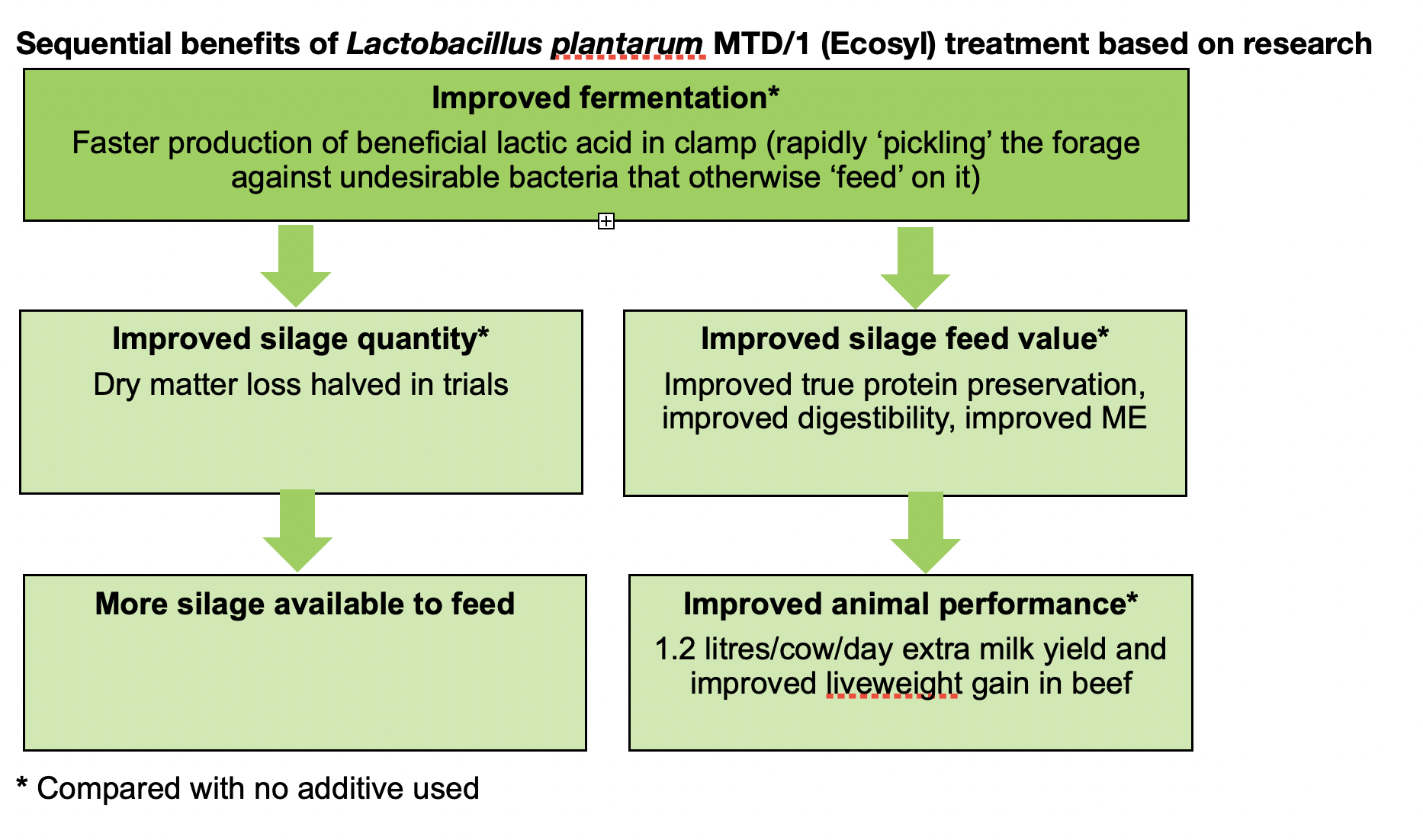
Research on Ecosyl has shown that it not only produces much faster pH falls than an untreated fermentation, but it has also halved DM loss and conserved greater nutritional quality.
In trials, using Ecosyl has been shown to boost silage metabolisable energy by 0.6 MJ/kgDM compared with untreated silage, and to improve animal DM intakes. It has also preserved more true protein.
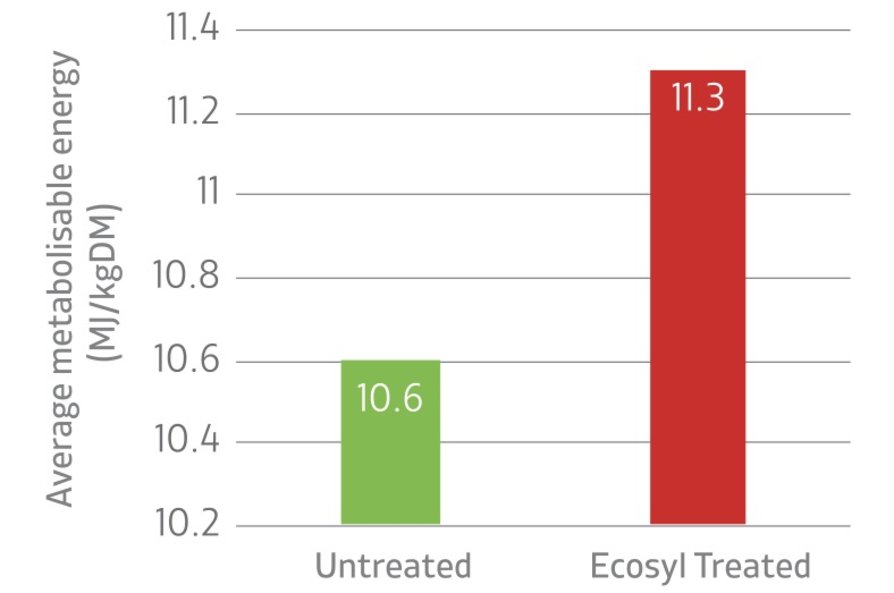
Most important of all, Ecosyl has led to improved animal performance. Across a range of forages in 15 international independent dairy trials, milk yield from feeding silage made with Ecosyl was improved by an average of an extra 1.2 litres per cow per day over untreated silage.
Across 19 independent beef trials, it has also consistently produced more beef – with liveweight gain in growing cattle increased by more than 11% in 10 trials, and in finishing cattle increased by more than 9% in 9 trials.
Poorer, untreated fermentations
At the opposite end of the scale to an efficient, treated fermentation, poorer fermentations can occur for two reasons. Firstly, if they are carried out by bacteria naturally present on the grass that still produce lactic acid but do so less efficiently. Or secondly, if certain ‘bad’ bacteria are present on the grass.
The problem with these latter ‘bad’ bacteria is that they produce a range of less desirable end products besides lactic acid. This type of fermentation is termed heterofermentative.
These end products can include other acids called volatile fatty acids (VFAs). VFAs are weaker than lactic acid, which means the ‘pickling’ process is slower and the pH may not fall as low, so undesirable microbes can continue feeding on the valuable nutrients in the silage for longer. On top of this, carbon dioxide is produced. This is undesirable because carbon dioxide means loss of DM. It is also a greenhouse gas. Another by-product of a poor fermentation is ethanol, which is not a preservation acid at all.
Particularly poor fermentations occur if enterobacteria, the bacteria associated with slurry, are allowed to take hold in the clamp, or if clostridia bacteria are present, which are introduced from soil. These can waste around 17 and 18% of the original energy content of the sugar respectively.
Clostridial fermentations are also particularly undesirable because they convert beneficial lactic acid into butyric acid, which makes silage unpalatable. So not only is the silage less nutritious, but livestock want to eat less of it.
The slower fall in pH during the early stage of fermentation also means that there will be a greater breakdown of proteins, mainly due to continued plant enzyme activity.
Good silages should have a suitable pH of 3.8 - 4.5 depending on the % dry matter, low ammonia-N (less than 10% total N) and a high ratio of lactic acid to volatile fatty acids – a minimum of 3:1 or higher.
Can a silage additive be seen working?
To provide an insight into the workings of an additive, Volac scientists have used DNA fingerprinting to reveal the different bacteria present in silage (in this case grass silage) – either with or without Ecosyl additive applied – at 0, 3, 7 and 91 days after ensiling.
DNA fingerprinting is a technique used in forensics. Here it is used to produce an image (see picture below) where horizontal bands represent the DNA of different bacteria. Darker banding indicates more of that bacteria is present.
Where no additive was applied (left), results revealed that during the early part of the fermentation in particular, the silage was dominated by undesirable enterobacteria, commonly found in slurry.
Where Ecosyl was used (right), there was very little growth of enterobacteria, as the ‘good’ bacteria present in Ecosyl dominated the fermentation.
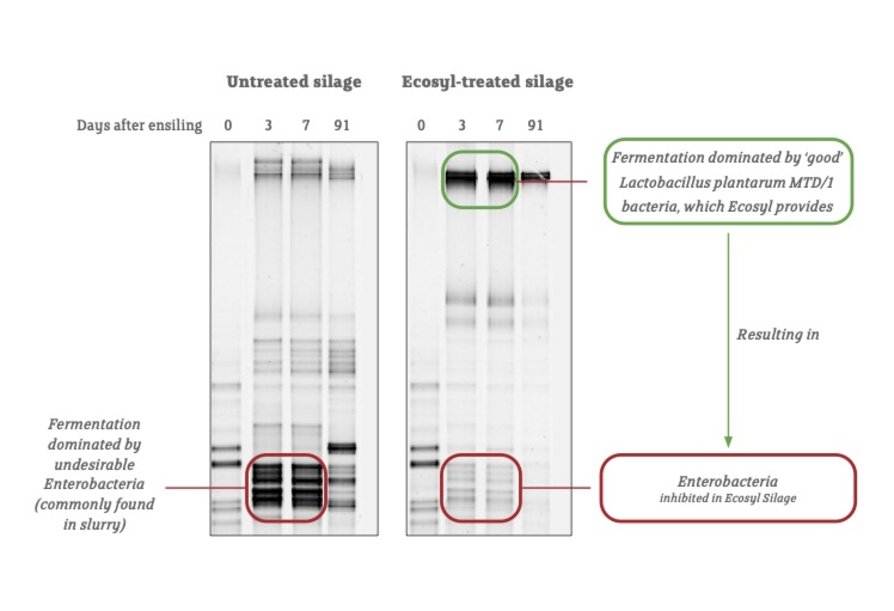 Does baled grass silage need an additive?
Does baled grass silage need an additive?
With baled silage, fermentation is slower and restricted due to the longer chop length and the typically higher % dry matter (DM) of the grass.
Bales are also more susceptible to aerobic spoilage (heating and moulding) due to their high %DM and large surface area to volume ratio making air removal more difficult – 27% of the volume of a 4 foot bale is in the outer 5cm. They are also less dense compared to clamped silage, although improvements in balers have meant densities have been much increased over the years.
Another issue with bales is their susceptibility to the growth of Listeria bacteria due to their higher pH and increased risk of aerobic spoilage. Listeria only needs a small amount of air ingress – e.g. from pierced wrap – to be able to grow.
Bales can therefore benefit greatly from an additive that will improve fermentation and reduce aerobic spoilage. The specific additive used can be tailored to the % DM of the bales and how long the silage will be exposed to air for once opened before being consumed.
For lower %DM bales (e.g. below 33% DM) that will be eaten within a day (e.g. on dairy farms) and where there is little risk of aerobic spoilage, then focus on an additive that preserves the bale by improving the initial fermentation e.g. Ecosyl 100.
If bales are likely to be open for two or three days before being eaten (e.g. on beef and sheep units) then focus on the initial fermentation but also on tackling spoilage and heating risks. For example, consider Ecocool, which contains two beneficial bacterial strains, one for fermentation and one to target the yeasts and moulds that cause heating and spoilage. Alternatively, consider Double Action (DA) Ecobale, which includes two bacteria, one of which is effective at fermenting drier material, plus a feed-approved preservative.
The Volac range of Ecosyl silage additives is effective in maintaining the nutritional quality of silage, whether clamp, big bale, maize or whole crop. Find out the key features and benefits of using our silage additives here.